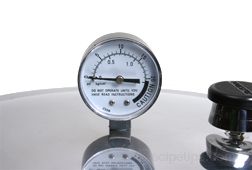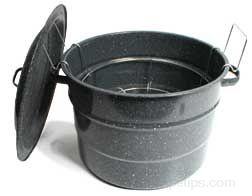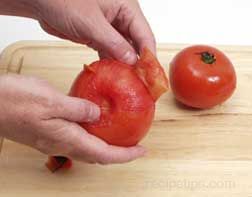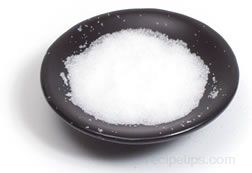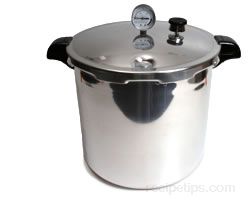|
See More Information on Canning Vegetables and Fruits:
The temperatures and processing times used when canning vegetables and fruit are determined by many factors. The food acidity, how the jars are packed, and canning method being used all determine the processing time, temperatures, and PSI when canning. The information below will help explain some of the factors that need to be considered when canning.
| |||||||||||||||||||||||||||||||||||||||||||||||||||||||||||||||||||||||||||||||||||||||||||||||||||||||||||||||||||||||||||||||||||||||||||||||||||||||||||||||||||||||||||||||||||||||||||||||||||||||||||||||||||||||||||||||||||||||||||||||||||||||||||||||||||||||||||||||||||||||||||||||||||||||||||||||||||||||||||||||||||||||||||||||||||||||||||||||||||||||||||||||||||||||||||||||||||||||||||||||||||||||||||||||||||||||||||||||||||||||||||||||||||||||||||||||||||||||||||||||||||||||||||||||||||||||||||||||||||||||||||||||||||||||||||||||||||||||||||||||||||||||||||||||||||||||||||||||||||||||||||||||||||
|
High Acidity Foods Using Boiling-Water Bath or |
Low Acidity Foods Using Pressure Canning Only | ||
| Apples | Plums | Artichokes (Jerusalem) | Mushrooms |
| Apricots | Raspberries | Asparagus | Okra |
| Blackberries | Rhubarb | Beans (green or yellow) | Parsnips |
| Blueberries | Strawberries | Beets | Peas |
| Cranberries | Pineapple | Broccoli | Peas (snap) |
| Cherries | Tomatoes (with acid added) | Brussels Sprouts | Peppers |
| Cucumbers (pickled) | Cabbage | Potatoes | |
| Grapefruit | Carrots | Pumpkin | |
| Grapes | Cauliflower | Spinach | |
| Nectarines | Corn | Squash (summer) | |
| Oranges | Eggplant | Squash (winter) | |
| Peaches | Figs | Sweet Potatoes | |
| Pears | Lima Beans | ||
Canning - Temperatures and Processing Times
Using the proper processing temperature and time is very important when canning foods to ensure that the processed food will be safe to eat. If not processed properly the food will spoil. There are several factors that affect the amount of processing time required. Some of these factors are listed below:
- The size and shape of the jars. Less time is needed for smaller jars.
- Whether they have been raw packed or hot packed.
- The amount of liquid in the jars. More liquid will allow the jar contents to heat more quickly.
- The size of the food being processed. Smaller pieces will heat faster.
- The canning method being used. Pressure canning will be faster.
- The altitude in your area. See at the bottom of each chart for instructions on how much to adjust the processing time for altitudes above sea level.
All of these factors determine the canning method, processing time and PSI (pounds per square inch) of pressure to be used. Be sure to follow all canning instructions very carefully. It is important to adjust the processing times when you are at a higher elevation. At sea level, water boils at 212°F but as the elevation increases water will boil at lower temperatures. The temperatures at which water boils at the higher elevations are not sufficient for killing bacteria. To compensated for the lower boiling temperatures, the processing time for boiling-water-bath canning needs to be increased and for pressure canning the PSI needs to be increased to destroy the harmful bacteria. Shown below are some charts with processing information and the adjustments that need to be made in processing time for higher elevations. If you are unsure of what the elevation is in your area, you can call your local county extension office to request this information.
| High Acid Foods - Boiling-Water-Bath Canning Method | ||||||||||
|
Headspace: Leave 1/2 inch headspace on all high acid foods with two exceptions. When canning strawberry jam - leave 1/4 inch headspace. When canning grapes - leave 1 inch headspace. | ||||||||||
| Food Type | Pack Method | Process Time - Minutes | ||||||||
| Pint Jars | Quart Jars | |||||||||
| Apples | Hot | 20 | 20 | |||||||
| Apricots | Raw Hot |
25 20 |
30 25 | |||||||
| Blackberries | Raw Hot |
15 15 |
20 15 | |||||||
| Blueberries | Raw Hot |
15 15 |
20 15 | |||||||
| Cranberries | Hot | 15 | 15 | |||||||
| Cherries | Raw Hot |
25 15 |
30 20 | |||||||
| Cucumbers (pickled in vinegar brine) | Raw | 10 | 15 | |||||||
| Grapefruit | Raw | 10 | 10 | |||||||
| Grapes | Raw Hot |
15 10 |
20 10 | |||||||
| Nectarines | Raw Hot |
25 20 |
30 25 | |||||||
| Oranges | Raw | 10 | 10 | |||||||
| Peaches | Raw Hot |
25 20 |
30 25 | |||||||
| Pears | Raw Hot |
25 20 |
30 25 | |||||||
| Plums | Raw Hot |
20 25 |
20 25 | |||||||
| Raspberries | Raw Hot |
15 15 |
20 15 | |||||||
| Rhubarb | Hot | 15 | 15 | |||||||
| Strawberry Jam | Hot | 5 | ||||||||
| Pineapple | Hot | 15 | 20 | |||||||
| Tomatoes - Juice (with acid added) | Hot | 35 | 40 | |||||||
| Tomatoes - Whole or halved - No Liquid Added (with acid added) | Raw | 85 | 85 | |||||||
| Tomatoes - Crushed (Quartered) - No Liquid Added (with acid added) | Hot | 35 | 45 | |||||||
|
High Altitude: The processing times above are for canning at sea level. Adjust as shown below:
| ||||||||||
When using a pressure canner to process high acid foods, your processing time is much shorter than when processing with the boiling-water-bath. When processing at higher elevations the processing time can remain the same as what is used at sea level but the PSI (pounds per square inch) needs to be increased to make up for the lower internal temperature of the canner. Do not begin counting the processing time until the canner has reached its required pressure reading.
| High Acid Foods - Dial Gauge Pressure Canning Method | |||||||||||||||
|
Headspace: Leave 1/2 inch headspace on all high acid foods listed below. At higher elevations, the steam in the headspace will expand more than at elevations below 1000 feet. To allow for this expansion, it is suggested that you increase the headspace by 1/8 inch for each 1000 feet above see level, not to exceed 1 inch on pint jars and 1 3/4 inches on quart jars. | |||||||||||||||
| Food Type | Pack Method |
Process Time(minutes) |
PSI (pounds per square inch of pressure) | ||||||||||||
| Pint Jars | Quart Jars | Under 2000 ft. |
2001 to 4000 ft. | 4001 to 6000 ft. | 6001 to 8000 ft. | ||||||||||
| Apples | Hot | 8 | 8 | 6 lb. | 7 lb. | 8 lb. | 9 lb. | ||||||||
| Apricots | Raw Hot |
10 10 |
10 10 |
6 lb. |
7 lb. 7 lb. |
8 lb. 8 lb. |
9 lb. 9 lb. | ||||||||
| Blackberries | Raw Hot |
8 8 |
10 8 |
6 lb. |
7 lb. 7 lb. |
8 lb. 8 lb. |
9 lb. 9 lb. | ||||||||
| Blueberries | Raw Hot |
8 8 |
10 8 |
6 lb. |
7 lb. 7 lb. |
8 lb. 8 lb. |
9 lb. 9 lb. | ||||||||
| Cherries | Raw Hot |
10 8 |
10 10 |
6 lb. |
7 lb. 7 lb. |
8 lb. 8 lb. |
9 lb. 9 lb. | ||||||||
| Grapefruit | Raw Hot |
8 10 |
10 10 |
6 lb. |
7 lb. 7 lb. |
8 lb. 8 lb. |
9 lb. 9 lb. | ||||||||
| Nectarines | Raw Hot |
10 10 |
10 10 |
6 lb. |
7 lb. 7 lb. |
8 lb. 8 lb. |
9 lb. 9 lb. | ||||||||
| Oranges | Raw Hot |
8 10 |
10 10 |
6 lb. |
7 lb. 7 lb. |
8 lb. 8 lb. |
9 lb. 9 lb. | ||||||||
| Peaches | Raw Hot |
10 10 |
10 10 |
6 lb. |
7 lb. 7 lb. |
8 lb. 8 lb. |
9 lb. 9 lb. | ||||||||
| Pears | Hot | 10 | 10 | 6 lb. | 7 lb. | 8 lb. | 9 lb. | ||||||||
| Plums | Raw Hot |
10 10 |
10 10 |
6 lb. |
7 lb. 7 lb. |
8 lb. 8 lb. |
9 lb. 9 lb. | ||||||||
| Raspberries | Raw Hot |
8 8 |
10 8 |
6 lb. |
7 lb. 7 lb. |
8 lb. 8 lb. |
9 lb. 9 lb. | ||||||||
| Rhubarb | Hot | 8 | 8 | 6 lb. | 7 lb. | 8 lb. | 9 lb. | ||||||||
| Tomatoes - Juice (with acid added) | Hot | 20 | 20 | 6 lb. | 7 lb. | 8 lb. | 9 lb. | ||||||||
| Hot | 15 | 15 | 11 lb. | 12 lb. | 13 lb. | 14 lb. | |||||||||
| Tomatoes - Whole or halved - No Liquid Added (with acid added) | Raw | 40 |
40 | 6 lb. | 7 lb. | 8 lb. | 9 lb. | ||||||||
| Raw | 25 | 25 | 11 lb. | 12 lb. | 13 lb. | 14 lb. | |||||||||
| Tomatoes - Crushed (Quartered) - No Liquid Added (with acid added) | Hot | 20 | 20 | 6 lb. | 7 lb. | 8 lb. | 9 lb. | ||||||||
| Hot | 15 | 15 | 11 lb. | 12 lb. | 13 lb. | 14 lb. | |||||||||
|
Weighted-Gauge Pressure Canning: When using a weighted-gauge pressure canner, use the chart above for pack methods and processing time. Weighted-gauge pressure canners cannot have the PSI increased by 1 lb. increments, so adjust the PSI as shown below:
| |||||||||||||||
| Low Acid Foods - Dial Gauge Pressure Canning Method | |||||||||||||
|
Headspace: Leave 1 inch headspace on all low acid foods listed below with the exception of lima beans, raw packed. When using the raw packed method for canning with quart size jars, increase the headspace to 1 1/2 inches for small beans and 1 1/4 inches for large beans. At higher elevations, the steam in the headspace will expand more than at elevations below 1000 feet. To allow for this expansion, it is suggested that you increase the headspace by 1/8 inch for each 1000 feet above see level, not to exceed 1 inch on pint jars and 1 3/4 inches on quart jars. | |||||||||||||
| Food Type | Pack Method |
Process Time (minutes) |
PSI (pounds per square inch of pressure) | ||||||||||
| Pint Jars | Quart Jars | Under 2000 ft. |
2001 to 4000 ft. | 4001 to 6000 ft. | 6001 to 8000 ft. | ||||||||
| Artichokes (Jerusalem) | Hot | 25 | 25 | 11 lb. | 12 lb. | 13 lb. | 14 lb. | ||||||
| Asparagus | Raw Hot |
30 30 |
40 40 |
11 lb. |
12 lb. 12 lb. |
13 lb. 13 lb. |
14 lb. 14 lb. | ||||||
| Beans (green or yellow) | Raw Hot |
20 20 |
25 25 |
11 lb. |
12 lb. 12 lb. |
13 lb. 13 lb. |
14 lb. 14 lb. | ||||||
| Beets | Hot | 30 | 35 | 11 lb. | 12 lb. | 13 lb. | 14 lb. | ||||||
| Broccoli | Canning is not recommended. Best to freeze or pickle for preservation. | ||||||||||||
| Brussels Sprouts | Canning is not recommended. Best to freeze or pickle for preservation. | ||||||||||||
| Cabbage | Canning is not recommended. Best kept in cold storage. | ||||||||||||
| Carrots | Raw Hot |
25 25 |
30 30 |
11 lb. |
12 lb. 12 lb. |
13 lb. 13 lb. |
14 lb. 14 lb. | ||||||
| Cauliflower | Canning is not recommended. Best to freeze for preservation. | ||||||||||||
| Corn | Raw Hot |
55 55 |
85 85 |
11 lb. |
12 lb. 12 lb. |
13 lb. 13 lb. |
14 lb. 14 lb. | ||||||
| Eggplant | Canning is not recommended. | ||||||||||||
| Lima Beans | Raw Hot |
40 40 |
50 50 |
11 lb. |
12 lb. 12 lb. |
13 lb. 13 lb. |
14 lb. 14 lb. | ||||||
| Mushrooms | Hot | 45 | 11 lb. | 12 lb. | 13 lb. | 14 lb. | |||||||
| Okra | Raw Hot |
25 25 |
40 40 |
11 lb. |
12 lb. 12 lb. |
13 lb. 13 lb. |
14 lb. 14 lb. | ||||||
| Peas | Raw Hot |
40 40 |
40 40 |
11 lb. |
12 lb. 12 lb. |
13 lb. 13 lb. |
14 lb. 14 lb. | ||||||
| Peas (snap) | Canning is not recommended. Best to freeze for preservation. | ||||||||||||
| Peppers | Hot | 35 | 11 lb. | 12 lb. | 13 lb. | 14 lb. | |||||||
| Potatoes, White | Hot | 35 | 40 | 11 lb. | 12 lb. | 13 lb. | 14 lb. | ||||||
| Pumpkin | Hot | 55 | 90 | 11 lb. | 12 lb. | 13 lb. | 14 lb. | ||||||
| Spinach and Other Greens | Hot | 70 | 90 | 11 lb. | 12 lb. | 13 lb. | 14 lb. | ||||||
| Squash (summer) | Canning is not recommended. Best eaten fresh. | ||||||||||||
| Squash (winter) | Hot | 55 | 90 | 11 lb. | 12 lb. | 13 lb. | 14 lb. | ||||||
| Sweet Potatoes | Hot | 65 | 90 | 11 lb. | 12 lb. | 13 lb. | 14 lb. | ||||||
|
Weighted-Gauge Pressure Canning: When using a weighted-gauge pressure canner, use the chart above for pack methods and processing time. Weighted-gauge pressure canners cannot have the PSI increased by 1 lb. increments, so adjust the PSI as shown below:
| |||||||||||||

